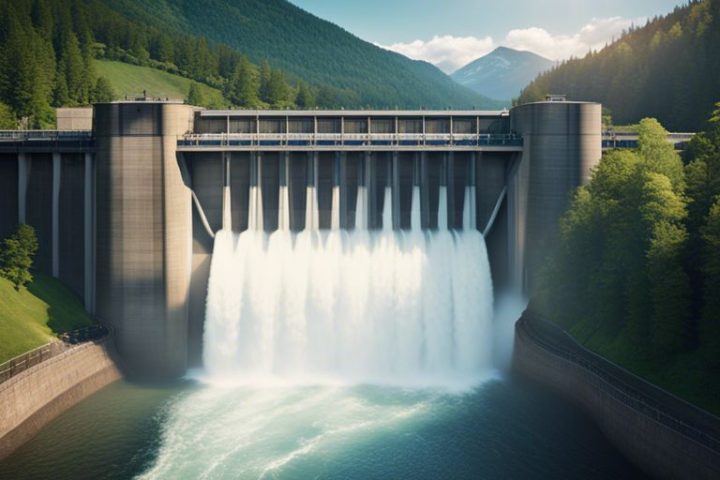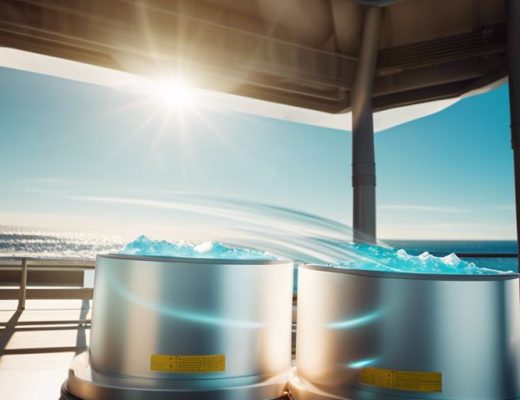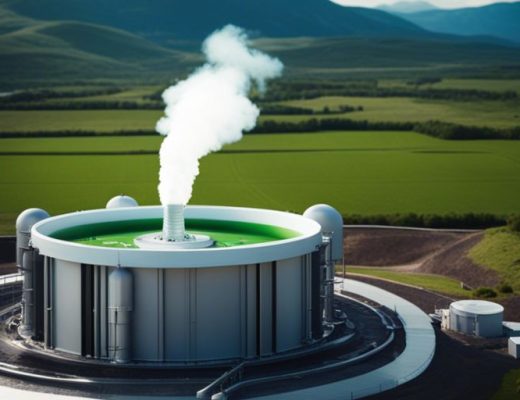Many marvel at the incredible potential of hydropower – the renewable energy source that taps into the force of flowing water to generate electricity. The sheer power of rushing streams and rivers can be harnessed to produce clean energy, making it a crucial player in the quest for sustainable power sources. Explore how hydropower plants work, their environmental impact, and why they are a key part of our global energy future.
The Science Behind Hydropower
How Hydropower Plants Work
Behind hydropower plants lies a fascinating process that harnesses the kinetic energy of flowing water to generate electricity. When water is released from a reservoir, it flows through turbines connected to generators. The force of the water spins the turbines, which then convert this mechanical energy into electrical energy. This electricity is then transmitted through power lines to homes and businesses, providing a reliable source of power.
The Role of Water in Energy Generation
On a fundamental level, water is the key player in energy generation through hydropower. Its abundance and constant flow make it a reliable source of renewable energy. The gravitational force of water flowing downhill provides the potential energy needed to turn the turbines and generate electricity. Plus, the hydropower process produces zero greenhouse gas emissions, making it a clean energy option that helps combat climate change.
History of Hydropower
Some of the earliest recordings of hydropower date back to ancient civilizations like the Greeks, who used water wheels to grind wheat into flour. The power of flowing water was harnessed by various cultures throughout history for tasks like irrigation, milling, and mining.
Early Beginnings
An understanding of hydropower as a significant energy source began in the 18th century, with researchers like French engineer Bernard Forest de Bélidor and British engineer John Smeaton making important contributions to the field. Water wheels were refined and used extensively in Europe and the United States during the industrial revolution.
Development and Advancements
On a larger scale, the late 19th and early 20th centuries saw **significant advancements** in hydropower technology, **leading** to the development of hydroelectric power plants. **Hydroelectricity** became a crucial source of electricity production, with **dams** constructed to store water and generate **electricity** through turbines. This period marked the **beginning** of modern **hydropower** as we **know** it today.
Benefits of Hydropower
Renewable Energy Source
Now, one of the key benefits of hydropower is that it is a renewable energy source. This means that the energy generated from water can be replenished naturally, making it a sustainable option for the future. By harnessing the power of rivers, dams, and other water sources, you can reduce your dependence on fossil fuels and contribute to a cleaner environment.
Low Carbon Emissions
On top of being renewable, hydropower also boasts low carbon emissions. When compared to traditional coal or gas power plants, hydropower produces significantly fewer greenhouse gases. This means that by choosing hydropower, you can help combat climate change and reduce your carbon footprint.
Any time you use hydropower instead of fossil fuels, you are helping to lower the overall carbon emissions released into the atmosphere. This can have a positive impact on the environment and your health in the long run.
Reliability and Flexibility
Source, hydropower offers reliability and flexibility in energy generation. Unlike solar or wind power, which are dependent on weather conditions, hydropower can be easily controlled. This means that you can rely on a steady source of energy, regardless of the weather outside. Additionally, hydropower plants can adjust their output quickly to meet changing energy demands, offering flexibility in energy production.
Any interruptions in the electricity supply can be smoothed out by the consistent and reliable nature of hydropower. This ensures that you have access to power when you need it, making hydropower a dependable energy source for your everyday needs.
Types of Hydropower Plants
After harnessing the power of water for energy, it is necessary to understand the different types of hydropower plants that exist. Hydropower plants can be categorized into various types based on their design and operation. Here are some common types of hydropower plants:
- Impoundment Hydroelectricity
- Run-of-River Hydroelectricity
- Pumped Storage Hydroelectricity
Impoundment Hydroelectricity
One method of harnessing hydropower is through impoundment hydroelectricity. This type of plant involves constructing a dam on a river to create a reservoir. Water is then released through turbines to generate electricity. This is one of the most common forms of hydropower generation and provides a reliable source of electricity.
Run-of-River Hydroelectricity
RunofRiver hydropower plants do not involve large dams or reservoirs. Instead, these plants use the natural flow of the river to generate electricity. The water is diverted through a canal or a penstock to drive turbines, producing electricity. Run-of-river plants have less environmental impact compared to impoundment plants as they do not disrupt the natural flow of the river drastically.
The development of run-of-river hydropower projects has gained popularity due to their lower environmental impact and faster implementation compared to larger hydroelectric projects. Assume that you live near a river, a run-of-river hydropower plant could potentially be a sustainable source of electricity for your community.
Pumped Storage Hydroelectricity
To store excess electricity and meet peak demand, pumped storage hydropower plants are utilized. These plants have two reservoirs at different elevations. During times of low electricity demand, the excess power is used to pump water from the lower reservoir to the upper reservoir. When electricity demand is high, water is released back down to the lower reservoir through turbines to generate electricity. Pumped storage plants play a crucial role in balancing the grid and ensuring a stable supply of electricity.
Another benefit of pumped storage hydropower plants is their ability to provide quick response to fluctuations in demand. They can ramp up electricity production within minutes, making them necessary for maintaining grid stability.
Environmental Impact of Hydropower
Effects on Aquatic Ecosystems
Your choice to harness hydropower can have significant effects on aquatic ecosystems. The construction of dams and reservoirs can disrupt the natural flow of rivers, impacting fish populations, water quality, and habitats. These disruptions can lead to the loss of biodiversity and negatively impact the overall health of aquatic ecosystems.
Alteration of Natural Water Flow
An alteration of natural water flow caused by hydropower projects can have far-reaching consequences. Changes in water flow can disrupt sediment transport, nutrient cycling, and the migration patterns of aquatic species. For instance, the construction of dams can prevent fish from moving upstream to spawn, leading to a decline in fish populations.
Land Use and Habitat Disruption
Any land use changes associated with hydropower projects can result in habitat disruption and fragmentation. The inundation of large areas for reservoirs can lead to the loss of valuable habitats and displacement of wildlife populations. Another consequence is the alteration of natural vegetation patterns, which can further impact local ecosystems.
Challenges and Limitations of Hydropower
Many challenges and limitations exist when it comes to harnessing hydropower as a renewable energy source. These challenges can impact the efficiency and sustainability of hydropower plants.
Dependence on Water Resources
Hydropower is highly dependent on water resources, which can be affected by factors such as climate change, droughts, and water pollution. Your ability to generate electricity from hydropower can be significantly hindered if there is a shortage of water supply in the reservoirs or rivers where the plants are located.
High Initial Investment Costs
To invest in hydropower plants, you need to be prepared for high initial costs for the construction of infrastructure such as dams, turbines, and powerhouses. This can be a significant barrier for individuals or organizations looking to tap into hydropower as an energy source.
However, it’s important to note that while the upfront costs may be high, **the long-term benefits of hydropower** can outweigh these initial investments. Once the plant is operational, **you can enjoy low operational and maintenance costs** compared to other forms of energy generation.
Technical and Maintenance Issues
Any technical issues or maintenance requirements with hydropower plants can pose challenges in ensuring continuous and efficient electricity generation. Components such as turbines, generators, and control systems require regular maintenance to prevent breakdowns and optimize performance.
With **proper maintenance** and monitoring, **you can ensure the longevity and efficiency of your hydropower plant**, allowing it to continue providing clean energy for years to come.
Final Words
With these considerations in mind, it is evident that hydropower plays a crucial role in sustainable energy production. By harnessing the power of water, we can generate electricity without relying on fossil fuels, reducing our carbon footprint and preserving the environment for future generations. Embracing hydropower as a renewable energy source is not only beneficial for our planet but also for our energy security and economic prosperity.





